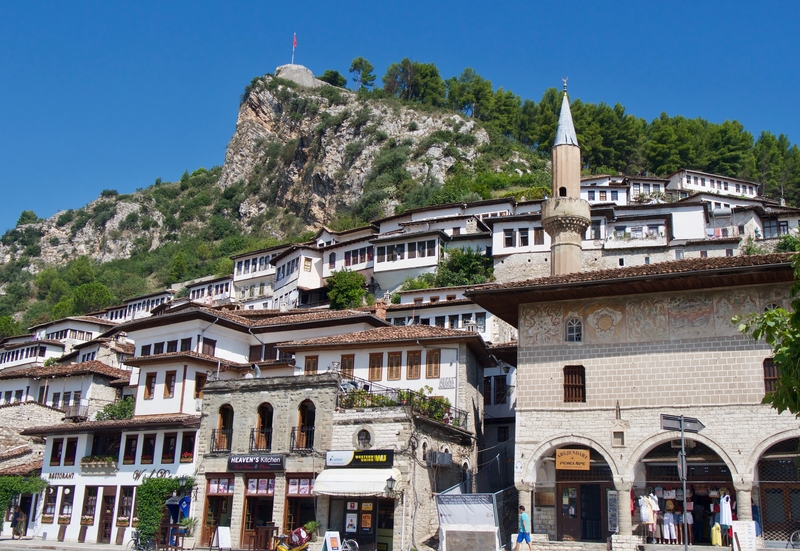
Visiting the UNESCO Sites in Albania
Before visiting Albania, I had pre-conceived ideas about I might expect. What little I knew about Albania had to do with its repressive former dictator, its 20th century isolationism, its thousands of concrete bunkers, and its relative obscurity.
Yet, Albania took my assumptions and turned them upside down. From the moment I stepped foot in Tirana, I realized I had become privy to one of the world’s best kept travel secrets; a secret that is spreading quickly amongst the travel blogging community and slowly leaking to the general public.
Albania is vibrant, colorful and teeming with things to see and do.
My visit to Albania consisted of two parts. Part one included Tirana and a foray into the Albanian Alps. Part two encompassed the world heritage gems of Berat, Girokastra and Butrint—three UNESCO sites in southern Albania that showcase the country’s rich heritage.
ALBANIA’S WORLD HERITAGE SITES
Albania has five world heritage sites: two that it shares with neighboring countries, and three that are entirely its own.
Albania’s shared UNESCO World Heritage Sites include the Natural and Cultural Heritage of the Ohrid Region (a distinction that is shared with the bordering country of North Macedonia) and the Primeval Beach Forests that blanket twelve other regions in Europe.
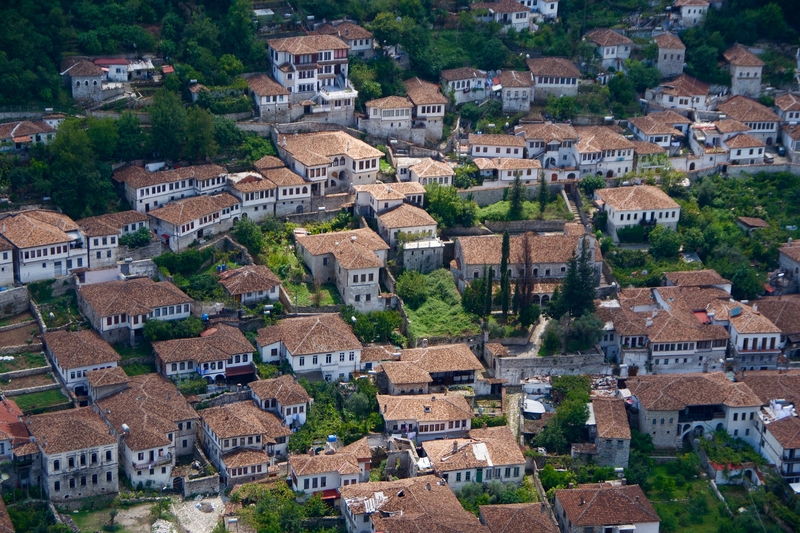
Though I visited the both Lake Ohrid and the beech forests during my trip to the Balkans, this guide to Albania’s world heritage sites focuses on the attractions that lie entirely within the Albania’s jurisdiction.
BERAT: CITY OF 1,000 WINDOWS
Known as the City of 1000 Windows, Berat is Albania’s most picturesque city and a Balkans road trip highlight. Stepping foot in Berat is like flipping through the pages of a European folktale. Here, old men and women walk hand in hand down cobbled streets. Grape vines scramble up the sides of buildings and are woven into awnings above hidden alleyways. Lovely Ottoman homes with oversized windows tumble down a hill, crowned by the imposing Kala Fortress.
With hidden cobbled lanes and stunning photo opportunities at every bend, Berat is how I imagine parts of Europe may have looked before the onset of mass tourism.
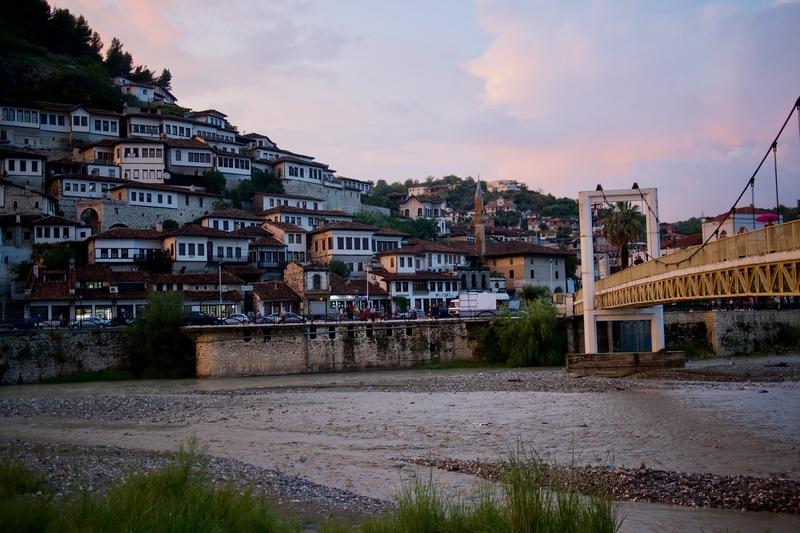
We stayed at the Hotel Orestiada for two nights while in Berat. The hotel sits at the end of a promenade that links Berat’s new town to its historic center. Each evening, bars and restaurants along the pedestrian street fill with tourists and locals alike. It is a nice place to sit back, eat dinner and watch the world go by.
Yet, while the new town has vibrant energy, the old town contains Berat’s most charming nooks and crannies.

Berat’s old town is divided into two levels. The lower level consists of buildings that skirt the mountain and flank either side of the Osum River. The upper level sits within the walls of the Kala Castle. A steep, twenty minute walk up the mountainside leads pedestrians to the fortress gates and upper town.
The Kala Castle overlooks Berat and its surrounding valleys. Within the walls are a collection of whitewashed homes and Medieval churches. The Church of Dormition of St Mary houses an iconographic museum that contains an outstanding collection 16th century icons.
While Berat is the most famous UNESCO Site in Albania, the city is a hidden European gem that is far from overcrowded. Like the rest of Albania, Berat’s charms have not yet succumbed to mass tourism and over-commercialization.
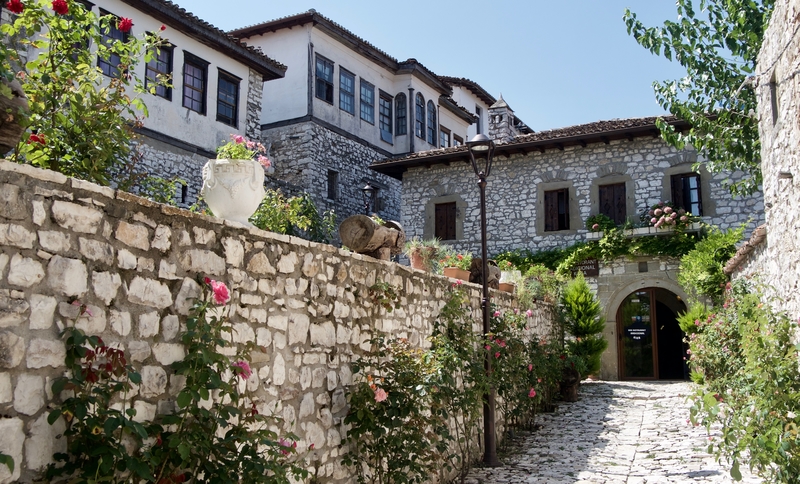
Berat is the kind of place where clocks seem to have stopped ticking decades ago. It is a place where old-world charm has survived despite–and perhaps partially because of–decades of brutal communism and isolationism.
GJIROKASTRA: THE UNESCO CITY OF STONE
South of Berat, Gjirokastra is another small Ottoman town with a fairytale setting. Dotted with 600 Ottoman-style homes, Gjirokastra’s old town overlooks the Drina Valley. Below the imposing Gjirokastra Castle, a sea of slate rooftops tumbles down the mountainside–hiding labyrinthine alleyways, miniature courtyards and cobbled streets.
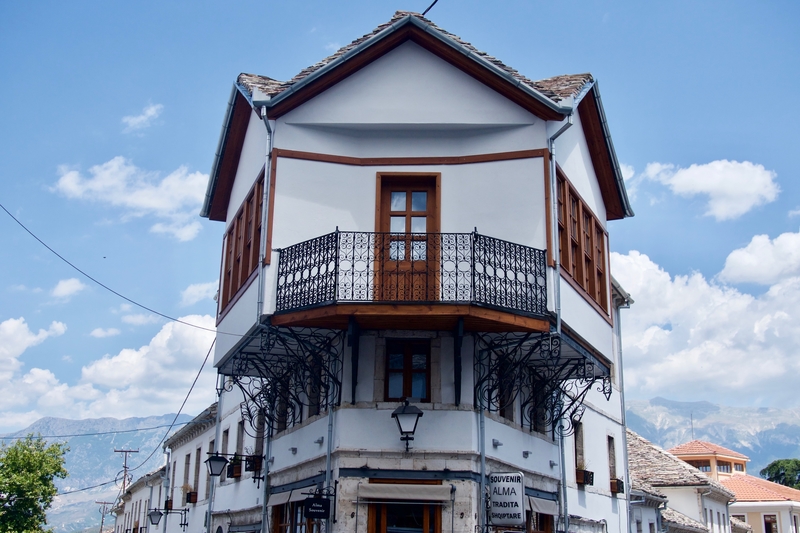
The bus ride from Berat to Gjirokastra took approximately four hours and dropped us off in Gjirokastra’s new town. From there, we walked twenty minutes uphill, to the town’s historic center.
Built on excessively steep terrain, Gjirokastra defies the vertical slopes on which it was built. Gjirokastra’s Castle sits above the angled old town and overlooks the quilted farmlands of the valley below. The castle–one of Gjirokastra’s top tourist attractions and the second largest of its kind in the Balkans– costs $1.50 to enter.
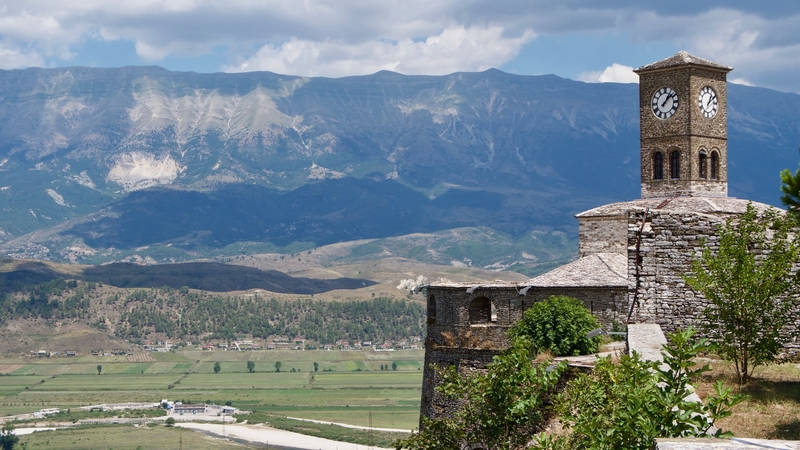
Despite being the birthplace of former dictator Enver Hoxha, Gjirokatra does not share the drab aesthetic of Communist Albania. Instead, like Berat, Gjirokastra has a distinct architecture that sets it apart from other towns and cities in Albania.
Gjirokastra’s ornate Ottoman-style houses are famous for their original slate roofs and painted interiors. Some of the houses–including the Zekate House and Skenduli House–can be visited in exchange for a few lek.
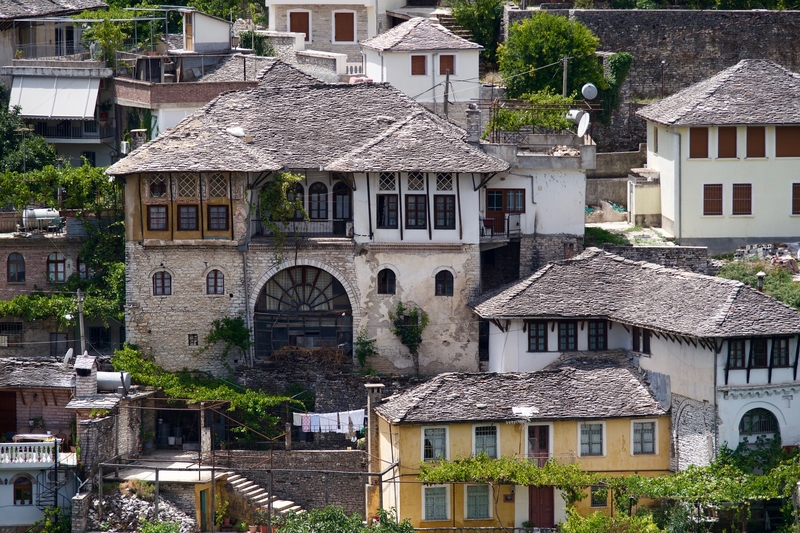
After wandering the streets of the old town, we visited the Zekate House near the city center. This grandiose house is made of two symmetrical structures that share an arched doorway and are connected by a balcony. The walls of the main room are adorned in flowery frescoes, while the ceilings consist of ornately carved wood.
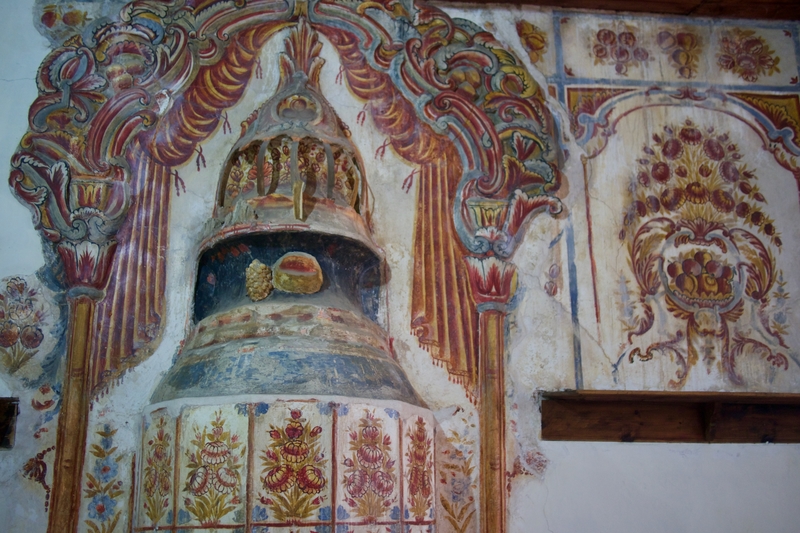
Gjirokastra became a UNESCO World Heritage Site in 2005, along with Berat. Like Berat, the town’s charming cobbled streets and white Ottoman buildings bear witness to Albania’s unique architectural landscape.
THE ANCIENT ROMAN RUINS OF BUTRINT
After spending a day in Gjirokastra, we took the bus to Sarande in order to spend a few days along Albania’s Riviera. Southern Albania is far more developed than the north and tourists from around Europe have been flocking to its sun-kissed shores in recent years.
We visited the archeological site of Butrint as a day trip from Sarande. Located less than twenty miles from Sarande, Butrint is beautifully situated on a forested hill and nestled between blue-green lakes.
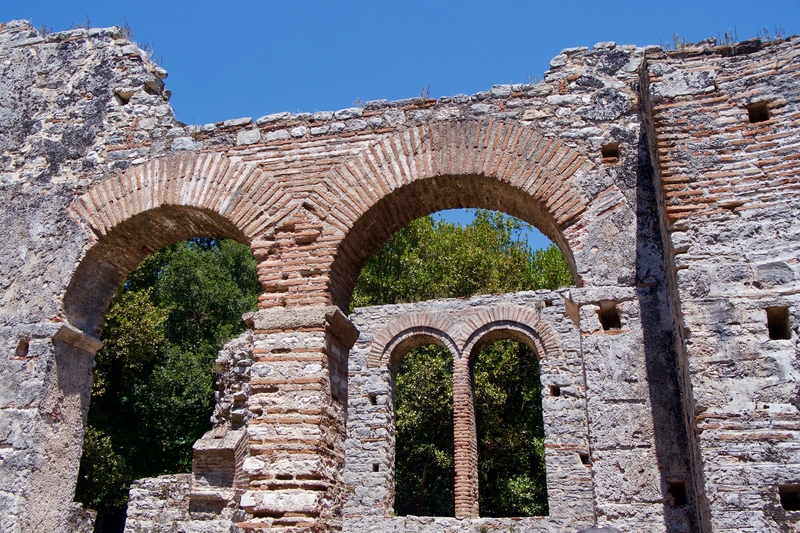
The first established UNESCO Site in Albania, Butrint has a storied history. The present archaeological site is a collection of ruins that represent various periods in the city’s development–from its Hellenistic roots, to its expansion under the Romans, to the basilicas and baptistries that were constructed in the 6th century while Butrint was a Byzantine bishopric.
On top of the hill sits a Venetian fortress-turned-museum that highlights the area’s history. Entrance to the archeological site and museum costs $7.
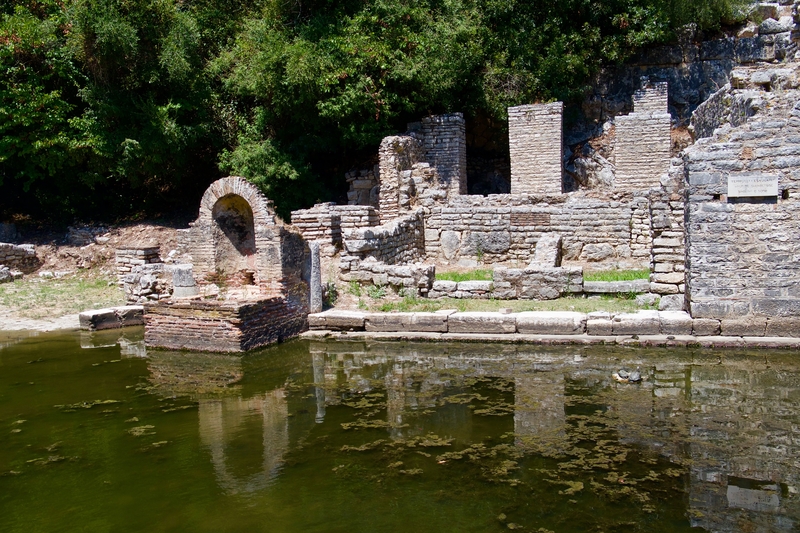
Set in a beautiful forested area, the ruins of Butrint include an amphitheater, a castle, and remnants of a cathedral. Unfortunately, due to conservation measures, I was unable to see the floor mosaics of Butrint’s baptistry.
Nevertheless, Butrint’s ancient ruins are a worthwhile day trip from Sarande and an impressive showcase of Albania’s ancient history.
****
The three UNESCO sites in Albania—Berat, Gjirokastra and Butrint— were the last stops on our Balkan itinerary. Had we had more time in the country, I would have loved to dedicate a few days to Albania’s dramatic coastline.
Aside from an afternoon in Ksamil, I didn’t spend much time along Albania’s Riviera. I did, however, catch a glimpse of the country’s winding shores while enroute from Sarande to Tirana.
While wizzing down hairpin turns on the Riviera Bus, I soaked in Albania’s dramatic coastal scenery as best I could—catching fleeting views of some of the best beaches in the Mediterranean.
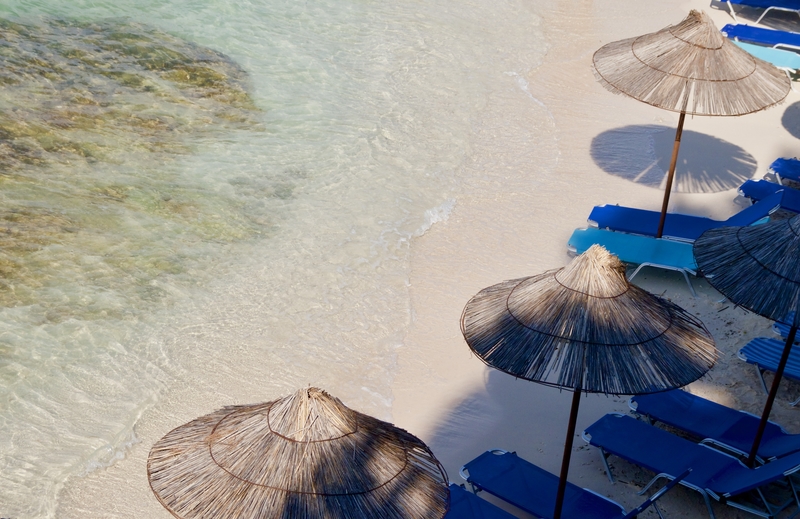
Albania is an enchanting destination that is just now opening its doors to travelers. Once a communist country that was closed off to the rest of the world, this majority-Muslim nation defies categorization. Albania is at once lively, yet serene. It is colorful, yet drab. It is ancient, yet hurling through the 21st century at breakneck speed.
With unbeatable prices, a wealth of history, remarkable UNESCO sites, an intriguing past, and friendly locals, Albania is a well-kept secret that will soon go viral.


